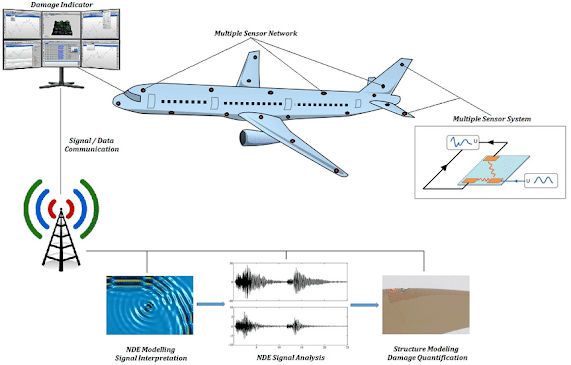The Role of SATCOM Amplifiers in Communication Systems
SATCOM (Satellite Communication) amplifiers are crucial components in satellite communication systems that play a significant role in enhancing signal strength and improving overall system performance. In this comprehensive overview, we will delve into the key aspects of SATCOM amplifiers, including their purpose, technologies, frequency range, power output, efficiency, protection mechanisms, applications, and emerging trends.
𝐆𝐞𝐭 𝐚 𝐅𝐫𝐞𝐞 𝐑𝐞𝐬𝐞𝐚𝐫𝐜𝐡 𝐏𝐃𝐅:
https://marketsquareinsights.com/satcom-amplifier/?query=sample_report
SATCOM amplifiers are designed to amplify weak signals transmitted or received by satellite communication systems. They boost the power level of signals to overcome losses during long-distance transmission and improve the signal quality at the receiving end. By increasing the signal strength, SATCOM amplifiers enable reliable and efficient communication over vast distances, ensuring seamless connectivity for various applications.
𝐌𝐚𝐣𝐨𝐫 𝐊𝐞𝐲 𝐂𝐨𝐦𝐩𝐚𝐧𝐢𝐞𝐬 𝐂𝐨𝐯𝐞𝐫𝐞𝐝 𝐢𝐧 𝐒𝐀𝐓𝐂𝐎𝐌 𝐀𝐦𝐩𝐥𝐢𝐟𝐢𝐞𝐫𝐬 𝐚𝐫𝐞:
Communications & Power Industries (CPI)
Comtech
L-3 Narda-MITEQ
General Dynamics SATCOM Technologies
Kratos
Gilat
Norsat(Hytera)
Amplus
Advantech Wireless (Baylin)
Agilis(ST Electronics)
Mission Microwave
There are different technologies employed in SATCOM amplifiers, including solid-state amplification and traveling wave tube (TWT) technology. Solid-state amplifiers use transistors to amplify signals, while TWT amplifiers utilize vacuum tubes. Solid-state amplifiers are known for their compact size, low power consumption, and high reliability. TWT amplifiers, on the other hand, offer higher power output capabilities and are commonly used for applications that require high power levels.
SATCOM amplifiers are designed to operate within specific frequency bands used for satellite communication. These frequency bands range from L-band (1-2 GHz) to Ka-band (26.5-40 GHz), depending on the application and satellite system. The choice of frequency bands depends on factors such as available spectrum, signal propagation characteristics, and system requirements.
The power output of SATCOM amplifiers can vary depending on the application and system requirements. They can range from a few watts to several kilowatts. The power output requirement is determined by factors such as the distance of communication, antenna size, and system specifications. High-power amplifiers are commonly used in applications that require long-range communication or coverage of large geographical areas.
Efficiency is a critical aspect of SATCOM amplifiers. Modern amplifiers strive for high energy efficiency to minimize power consumption and maximize battery life, especially in portable or mobile communication systems. Efforts are made to minimize power losses and optimize the amplifier's performance to ensure efficient use of power resources.
SATCOM amplifiers often incorporate built-in protection mechanisms to safeguard against potential issues such as overheating, overvoltage, and overcurrent. These protection mechanisms help ensure the safe and reliable operation of the amplifiers. Additionally, SATCOM amplifiers may include monitoring features that provide real-time status information and fault detection, allowing for proactive maintenance and troubleshooting.
SATCOM amplifiers find applications in various sectors, including military and defense, aerospace, maritime, telecommunication, broadcasting, and remote sensing. They are instrumental in establishing reliable communication links between satellites, ground stations, and mobile terminals. In military and defense applications, SATCOM amplifiers are used to enable secure and resilient communication for critical operations. In the aerospace industry, these amplifiers facilitate communication between spacecraft and ground control stations. SATCOM amplifiers also play a vital role in enabling maritime communication, broadcasting services, and remote sensing applications, among others.
In recent years, there have been several emerging trends and advancements in SATCOM amplifier technology. One notable trend is the development of high-efficiency amplifiers that minimize power consumption and heat dissipation. This is particularly important in satellite systems with limited power resources or those operating in extreme environmental conditions. Another trend is the integration of advanced digital signal processing techniques within the amplifiers. This allows for improved signal quality, adaptive power control, and enhanced performance in dynamic communication environments. Furthermore, there is ongoing research and development in the field of solid-state power amplifiers (SSPAs) and gallium nitride (GaN) technology, which offer higher power densities, improved linearity, and increased efficiency.
In conclusion, SATCOM amplifiers are integral components in satellite communication systems, enabling reliable and efficient communication over vast distances. They amplify weak signals, enhance signal strength, and improve overall system performance. SATCOM amplifiers utilize various technologies, operate within specific frequency bands, and offer different power output levels. Efficiency, protection mechanisms, and monitoring features are important considerations in amplifier design. SATCOM amplifiers find applications in diverse sectors, and emerging trends focus on high efficiency, digital signal processing, and advancements in solid-state power amplifiers. With continuous advancements in technology, SATCOM amplifiers are poised to play a vital role in future satellite communication systems.




Comments
Post a Comment